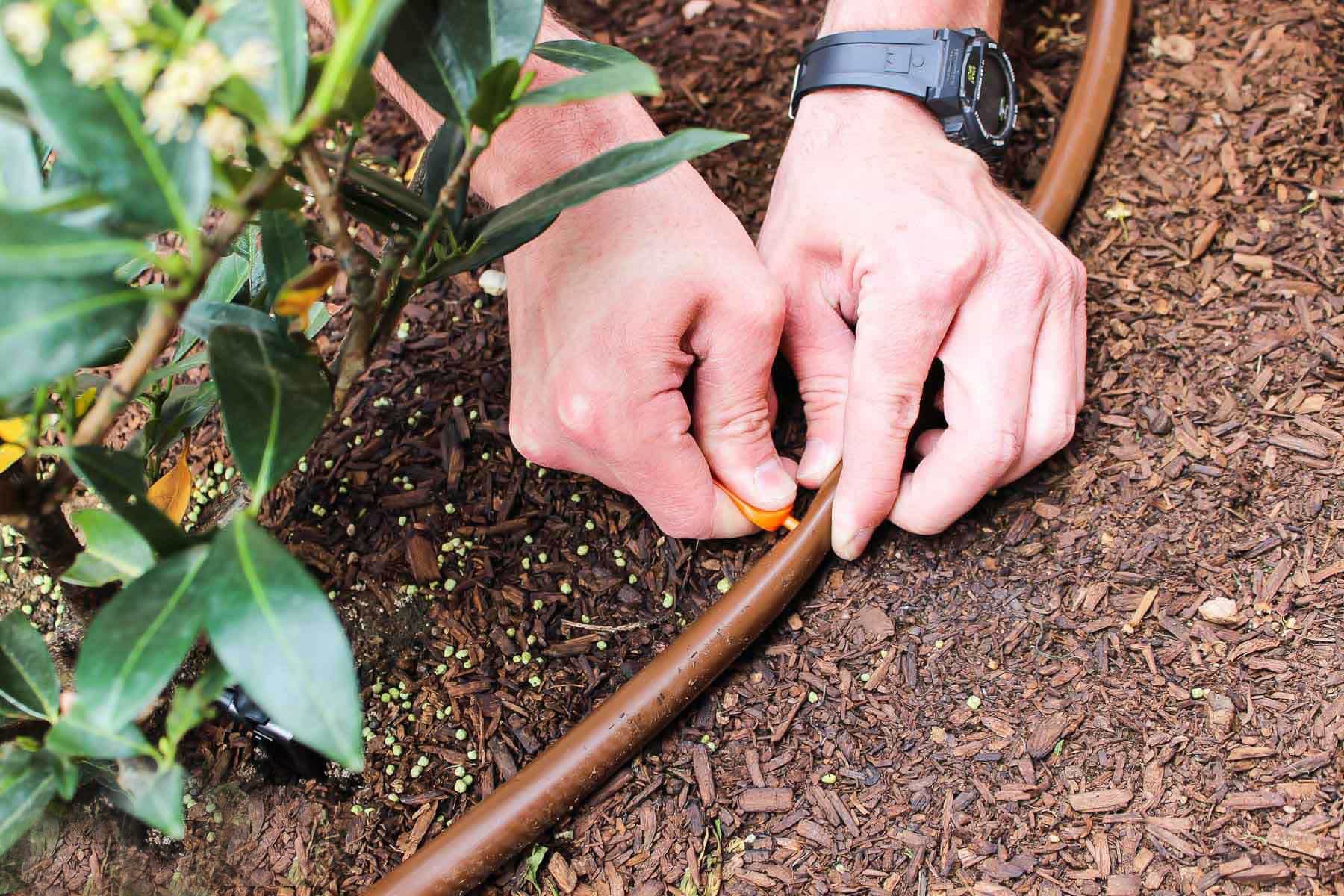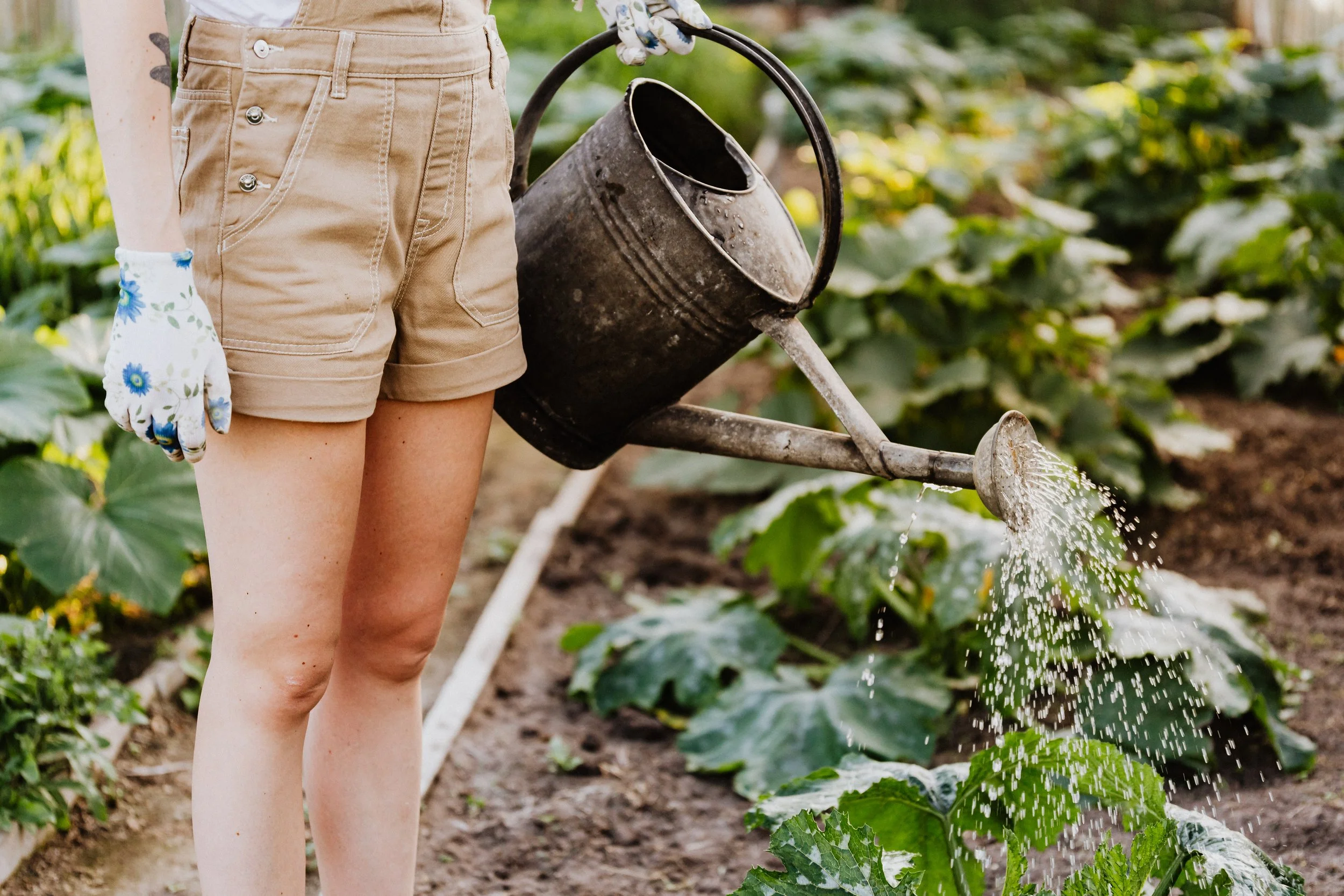How on Earth Do I Water These Plants?
By: Annie
By now, we’re getting familiar with the principles of water wise gardening. Amending your soil so it holds water. Choosing plants that don’t just tolerate dry conditions - they love it. Mulch heavily to keep moisture in the soil. And when you do water, water very slowly and deeply so the moisture soaks in.
It’s true that almost all plants - even those that are drought tolerant - need water to get them established though. When planting, we water to deeply soak the ground, but especially when planted in the summer, new plants will quickly die unless they’re watered again once or twice a week for the first few weeks, and then on a tapering schedule after that.
However, if you’ve chosen drought tolerant or xeric plants for your landscape, after the first rainy season (that’s winter here in the Bay Area) they’re unlikely to need much water at all.
So what are the options for those first few months of watering? The answer may surprise you.
Installing drip irrigation
Drip irrigation is a very common method of watering plants, and for the homeowner it can be an extremely convenient method, supplying just the right amount of water to plants at just the right time, using a timer. In theory.
However, there are serious concerns with this approach. Drip pipes and emitters are made of plastic. Obviously we’re all rightly worried about the amount of plastics in our world, but this concern becomes even more pressing when you realize that drip systems are made of plastic that’s easily broken by maintenance gardeners or gophers chewing through them. Water loss through leaks is incredibly wasteful, can cause your water bill to spike, and all that plastic buried in the ground is not only ugly when it surfaces, but just bad news for the environment from start to finish.
Then there’s the cost. A properly installed drip irrigation system can cost thousands, which for drought tolerant gardens makes no sense at all because you’re paying a lot for a garden full of plastic that may only be used for a few months in the first year.
After that, it either sits in the ground contributing to microplastic contamination or has to be removed by hand. And from there it goes to landfill, because as we now know plastics like this are very unlikely to be recycled, even if we place them in the recycling bin. Of the 40 million tons of plastic waste generated in the U.S. in 2021, only 5% to 6% — or about two million tons — was recycled.
2. Hand watering
A much better proposition is hand watering. All you need is a hose, a spray nozzle (or watering can) and your favorite podcast to listen to and away you go. This is a perfect time to give your plants a health check, look out for insect pests and make sure the mulch around your plants isn’t too close to the plant’s crown. Heck, you can even pull a weed or deadhead the flowers in the 15-30 seconds you’re watering each plant.
Other advantages of this method are being able to only water individual plants that truly need it, and being able to skip watering if the rain starts without fiddling with the irrigation timer. Where on earth did that instruction manual go?!
If you have 300 newly installed plants though, at 15 seconds per plant that’s an hour and 15 minutes of watering. And that might seem daunting to do twice a week - and what if you forget! Well, did you know we can hand water your plants for you? You’ll be surprised at how low the cost is. Over the course of 4 months, with biweekly watering for the first few weeks, tapering down to monthly visits later, the cost is significantly less than installing a temporary plastic irrigation system, plus you have expert eyes on your plants on a regular basis. Not to mention a clear conscience when it comes to adding plastics to our environment.
If you’d like to learn how to hand water your plants, we can show you, too. Our plant care sheets come with instructions, but we’re always nearby to walk you through the process.
3. Planting at the right time
Choosing the right water delivery method seems straightforward. However, we can go one better. Planting your garden in the late fall, winter and early spring when the ground is damp and rain is falling is an even more environmentally friendly way of gardening. At those times of year, and depending on your soil and other landscape conditions, some plants will need no extra water to get going, while others will need very little indeed.
In the winter some plants die back in preparation for their big spring growth period, meaning their need for water is often less than usual, but plants planted at that time of year can appear smaller, likely won’t be flowering, and in some cases may be dormant. However, they’ll be ready for the first signs of spring, and with a head start like that can be expected to put on a real show in their first year of growth.
So, consider booking your landscape installation for our rainy season. We can take care of all the landscape design and plant sourcing in advance, and at the first sign of rain we can get the garden in the ground to take advantage of that glorious free water.


